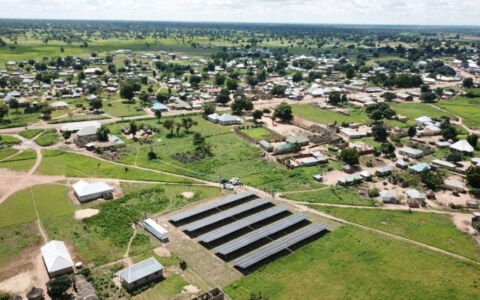Private Sector Investments to support Gender-Responsive Climate-Resilient Investments in Tajikistan
Private Sector Investments to support Gender-Responsive Climate-Resilient Investments in Tajikistan
Project Overall Goal
The objective of the project is to set up a financing facility to specifically target Tajikistan’s private sector and provide finance and technical support to farmers, small businesses, and households to enable them to adopt new water-efficient and energy-efficient technologies that will help to make their operations more resilient to the projected impacts of climate change on energy and water resources.
Executive Summary
Climate change poses huge risks to energy security in Tajikistan due to the almost total dependency on hydropower (98% of electricity generation). This is exacerbated by the extreme vulnerability of Tajikistan’s aging hydropower facilities to climate change impacts such as shifts in precipitation and snowmelt patterns, glacial melting, and extreme weather events such as floods. Tajikistan’s unreliable energy supply is seen as a major constraint on private sector development. Agricultural production and agri-processing, reliant heavily on access to process water and a reliable energy supply is of critical importance to Tajikistan’s agricultural sector and has significant export potential.
CLIMADAPT, an intermediated finance facility specifically targeting Tajikistan’s private sector, was launched in 2016 by the EBRD in partnership with the Pilot Program for Climate Resilience (PPCR) of the CIF, the Government of the United Kingdom and the multi-donor EBRD Early Transition Countries Fund. The facility provides finance and technical support to farmers, small businesses, and households to enable them to adopt new water-efficient and energy-efficient technologies that will help to make their operations more resilient to the projected impacts of climate change on energy and water resources.
CLIMADAPT started by on-lending to local banks through the creation of concessional finance facilities and conditions for loans to end beneficiaries. A key condition was that loans be made available for climate adaptation in Tajik priority sectors and to identified vulnerable groups. Specifically, this condition stipulates that the local banks provide financing to small businesses for sustainable technologies and practices for climate adaptation, thus enabling private sector investment in building climate resilience. To overcome the affordability constraints of local businesses and households, the CIF are providing US$5 million of concessional finance, which is blended with EBRD’s commercial finance.
Since its launch, CLIMADAPT provided almost USD 10 million of financing through local partner financial institutions (PFIs) across all regions of Tajikistan and helped finance over 3,400 sub-projects.
These funds have also accelerated financing for adaptation solutions through intermediated finance that extends beyond local banks to include microfinance institutions, demonstrating that microfinance can be an important by-product of intermediated finance. Moreover, it shows that microfinance for adaptation is a product of mature domestic institutions and policy. Maturity here stems from an enhanced and institutionalized understanding of adaptation investments for resilience, and a financial services market that recognizes the value of multilateral finance institutions.
CLIMADAPT also made significant strides in gender mainstreaming in Tajikistan. It initiated gender disaggregated reporting in PFIs and monitors the share of women sub-borrowers of the project which is equal to almost 30% and representing 14% of total volume of disbursed loans. A study found that 60% of women borrowers reported having more influence on decisions about family assets.
The project highlights how well targeted concessional finance can play a vital role in enabling private participation in adaptation activities.





